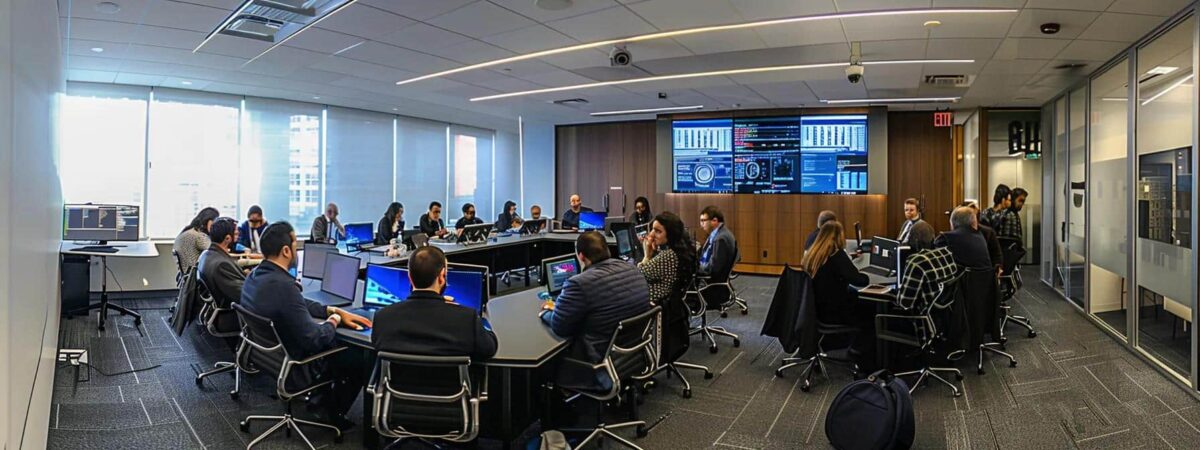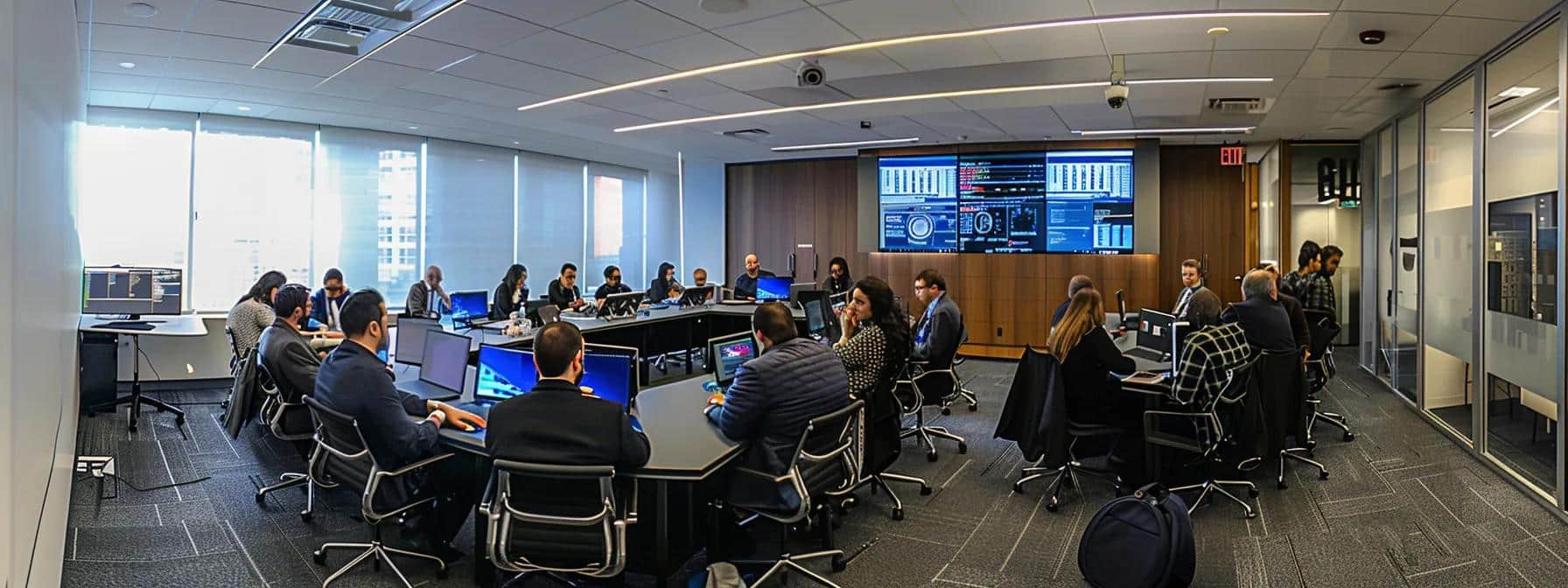6 Key Considerations in IT Support Charges – Understanding and Optimizing Your IT Expenses


6 Key Considerations in IT Support Charges – Understanding and Optimizing Your IT Expenses
In today’s competitive small business landscape, managing IT support costs is crucial to maintaining smooth operations and ensuring that your technology infrastructure supports growth rather than drains resources. As a small business owner, you need a clear understanding of the factors affecting IT support expenditures, the hidden fees that may arise in maintenance contracts, the various budget models available, how to measure the true value of IT support, approaches to optimizing costs, and future trends to anticipate in this space. In this article, I will walk you through six key considerations related to IT support charges, explaining the characteristics of each, supporting the discussion with quantifiable examples from venturebeat and research-backed evidence, and offering actionable insights that demonstrate why partnering with an expert IT support provider like Cyber Command can be one of the best decisions for your business.
Small businesses face many challenges when it comes to budgeting for IT support. Every dollar counts, and understanding where your money goes—from licensing fees to hidden costs—is essential for sustainable operation. Whether you are outsourcing your IT services or managing an in-house IT team, knowing the true cost of IT support can help increase profitability and improve system uptime. Throughout this article, I will emphasize the importance of transparency, regulatory compliance, and strategic planning in effectively managing IT-related expenditures.
Below, I present a numbered list that details six topics central to comprehending and controlling IT support charges. Each section answers a user query in the first sentence and then follows with supporting data, best practices, real-world examples from Cyber Command’s offerings in Orlando, Winter Park, Altamonte Springs, Winter Springs, and surrounding areas, and actionable tips for small business owners.
1. What Factors Affect IT Support Expenditures?

IT support expenditures are influenced by several critical factors such as hardware costs, software licensing fees, service level agreements, and the overall complexity of your infrastructure. Studies by Gartner (2022) and Forrester (2021) have highlighted that small businesses can see IT support costs vary by up to 30% depending on factors like the frequency of maintenance calls, the number of endpoints, and the scope of cybersecurity measures in place.
Key factors include:
– Infrastructure Complexity: Businesses with multiple locations, diverse operating systems, or legacy equipment tend to incur higher IT support costs.
– Level of Customization: Tailored IT solutions, specialized applications, and custom configurations require more expert attention and can drive up costs.
– Service Frequency and Urgency: On-demand troubleshooting, after-hours support, and emergency repairs typically come with higher fees.
– Regulatory and Compliance Requirements: Industries with strict compliance mandates, such as healthcare or finance, demand additional security measures and documentation that can increase support fees.
For example, Cyber Command has optimized its service delivery model by offering tiered pricing based on response times and service levels, ensuring predictable costs while maintaining high-quality support for its clients in central Florida. This strategic approach not only helps contain expenses but also builds long-term value in IT support engagements.
2. What Hidden Fees Are Often Found in IT Support and Maintenance Contracts?

Hidden fees in IT support and maintenance contracts can include charges for after-hours work, emergency support, software upgrade fees, and even billing for routine visits that exceed a predetermined monthly limit. In a survey published by TechRepublic (2021), nearly 40% of small business owners reported encountering unexpected service fees that were not detailed in their initial contract.
Common hidden fees include:
– After-Hours and Emergency Call-Out Fees: Service providers may charge premium rates for IT support provided outside of regular business hours.
– Travel and On-Site Service Fees: If your business is in a remote location or requires frequent on-site visits, transportation charges might be applied.
– Software and Hardware Upgrade Costs: Periodic updates, patches, and hardware replacements sometimes incur additional charges beyond the initial service fee.
– Billing for Routine Tasks: Routine monitoring or minor fixes that are considered above a set number of free visits may result in incremental fees.
Cyber Command works closely with small business clients to provide complete transparency in its contracts. For instance, by clearly itemizing potential extra charges and offering bundled maintenance packages, we help avoid unexpected costs while ensuring that your IT system remains robust and secure.
3. What Budget Models Are Available for IT Support Solutions?

Budget models for IT support solutions typically fall into several categories, such as fixed monthly fees, pay-as-you-go models, and tiered service packages. A report by Deloitte (2020) noted that businesses utilizing fixed-fee models generally experience a 20% reduction in administrative overhead compared to those with variable billing cycles.
Common budget models include:
– Fixed Monthly or Annual Fees: These provide predictable costs and are ideal for businesses that require consistent support without worrying about fluctuating expenses.
– Pay-As-You-Go Models: This model allows businesses to pay for additional services as needed, which may work well for smaller operations with less frequent use of IT support.
– Tiered Service Plans: Offering several service levels—from basic maintenance to complete Managed Services—allows businesses to choose a plan that best fits their operational needs and budget constraints. – Bundled Contracts: Packages that combine routine maintenance with periodic upgrades and emergency services into a single predictable cost may deliver better value over time.
For example, Cyber Command offers tiered support plans that allow small businesses to choose from several options based on the number of endpoints, service response times, and additional services such as backup solutions and cybersecurity monitoring. This flexibility ensures that every client receives a plan that is effectively balanced between cost and performance.
Before selecting a model, small business owners should evaluate their IT needs, historical support usage, and long-term growth plans. By analyzing these variables, you can choose a model that minimizes unexpected costs while ensuring rapid response to IT challenges.
4. How Do You Measure the Value in IT Support?

The value of IT support can be measured by evaluating metrics such as system uptime, resolution times, user satisfaction, and overall impact on operational efficiency. According to a study by Aberdeen Group (2020), businesses that closely monitor IT support performance can reduce service disruptions by up to 25%, thereby significantly improving productivity.
Key measurable aspects include:
– System Uptime and Availability: A high uptime percentage (e.g., 99.9% availability) is crucial, as downtime can cost businesses hundreds or thousands of dollars per minute.
– Service Level Agreement (SLA) Compliance: Evaluating how often support providers meet or exceed SLA targets for response and resolution times is a direct indicator of service quality.
– User Satisfaction Scores: Surveys focusing on end-user experiences can quantify the perceived value of the IT support service.
– Cost Savings and Return on Investment (ROI): Calculating the overall savings resulting from improved operational efficiency and reduced downtime can highlight the true value of proactive IT support.
Cyber Command, for instance, regularly collects performance data from its clients and reports an average system uptime of 99.95% with rapid resolution times. This translates into measurable productivity improvements and cost savings, which further reinforces the value of our tailored IT support services to small businesses.
A practical tool is the creation of a comprehensive KPI dashboard that tracks these key metrics over time. Such a dashboard can incorporate data points like incident frequency, average resolution time, and customer ratings, providing tangible proof of IT support benefits over precursory raw costs.
5. What Approaches Can Optimize IT Support Costs?

Optimizing IT support costs involves both strategic and operational tactics such as process automation, leveraging cloud-based services, preventive maintenance, and staff training for routine troubleshooting. Research from McKinsey (2021) suggests that companies adopting proactive IT management strategies can reduce overall IT support costs by as much as 20% annually.
Approaches for cost optimization include:
– Process Automation: Automating routine maintenance tasks such as software updates and system monitoring can save valuable time and decrease labor costs.
– Preventive Maintenance and Proactive Monitoring: Investing in regular check-ups and predictive analytics helps prevent major incidents, thereby reducing emergency service fees.
– Cloud-Based Solutions: Migrating to cloud-hosted applications drastically lowers hardware maintenance expenses and enhances scalability.
– Employee Training: Equipping staff with basic troubleshooting skills can minimize reliance on external support for minor issues and fast-track internal resolutions.
– Vendor Negotiations and Contract Reviews: Periodically reviewing service contracts and negotiating fees can help eliminate redundant services and hidden charges.
At Cyber Command, we’ve developed a proactive IT management framework that not only integrates state-of-the-art monitoring tools but also emphasizes continuous training and knowledge sharing within our clients’ teams. For example, by installing automated monitoring systems, we have helped businesses reduce emergency support incidents by over 15%, thereby optimizing support costs significantly.
To further illustrate, consider a mid-sized business that switched from a reactive to a proactive maintenance model. In just one year, the company experienced a 22% reduction in overall support costs while increasing uptime and user satisfaction measures. This real-world example demonstrates how effective cost optimization can impact both budget and business operations.
6. What Trends and Future Considerations Are Emerging for IT Support Charges?

Emerging trends in IT support are shaped by rapid technological advancements, evolving cybersecurity threats, and increasing demands for remote and hybrid work environments. Experts predict that in 2023 and beyond, the focus will shift toward outcome-based pricing models, comprehensive cybersecurity insurance integration, and AI-driven support automation. A report by IDC (2022) underlined that companies investing in AI-driven support systems reported a 30% improvement in response times while reducing costs and human error.
Key emerging trends include:
– AI and Machine Learning Integration: Utilizing AI to provide predictive maintenance, automated troubleshooting, and dynamic resource allocation is becoming increasingly prevalent.
– Outcome-Based Pricing Models: Instead of billing by time, providers are transitioning toward performance-based models where charges correlate with measurable business outcomes such as uptime, resolution speed, and business continuity.
– Cybersecurity-Driven Support: As cyber threats become more sophisticated, IT support contracts are evolving to include bundled cybersecurity services and continuous threat monitoring.
– Remote and Hybrid Work Support: The sustained trend toward remote work necessitates IT support models that cover decentralized infrastructures, secure remote access, and collaborative digital workspaces.
– Sustainability and Green IT: Future IT support services are also expected to align with environmental considerations, emphasizing energy-efficient infrastructure and sustainable practices.
For businesses planning for the future, partnering with forward-thinking IT support providers like Cyber Command can ensure that you stay ahead of technological disruptions. Our service models already integrate AI-based diagnostics, and we routinely update our processes in accordance with the latest trends, ensuring that our clients receive modern, efficient, and secure IT support solutions.
Final Thoughts

In summary, understanding the factors that affect IT support expenditures, recognizing hidden fees, choosing the right budget model, measuring IT support value, adopting cost-optimization approaches, and keeping pace with emerging trends are essential steps for small business owners. Each of these six key considerations plays a vital role in ensuring that your IT support strategy is both cost-effective and scalable. At Cyber Command, our focus is on proactively managing IT support to drive long-term value while minimizing disruptions and unexpected expenses.
By investing in a transparent and innovative IT support framework, small businesses are not only safeguarding their operations but also setting the stage for strategic growth. I encourage you to evaluate your current IT support arrangements, consider these factors carefully, and work with experts who can deliver a tailored solution that meets your unique business requirements.
Frequently Asked Questions

Q: How can I reduce unexpected IT support costs?
A: Reducing unexpected costs involves choosing a clear, transparent support contract, proactively monitoring your systems, and investing in preventive maintenance. Leveraging fixed-fee or bundled service models can also help eliminate sudden charges, as demonstrated by Cyber Command’s comprehensive support plans.
Q: What should I look for in an IT support contract to avoid hidden fees?
A: Look carefully for clauses about after-hours charges, travel fees, and incremental costs for routine services. A thorough contract review and clear communication with your provider about all potential expenses will help you avoid hidden fees.
Q: Is it more cost-effective to outsource IT support versus managing an internal team?
A: For many small businesses, outsourcing IT support can reduce overhead costs and provide access to specialized expertise while ensuring rapid response times. Studies have shown that outsourced IT support often results in improved uptime and lower overall costs compared to maintaining an in-house team.
Q: How does AI integration in IT support help lower expenses?
A: AI integration improves efficiency by automating routine tasks, predicting potential issues, and delivering faster resolutions. This reduces the dependency on human intervention for basic tasks and minimizes downtime, leading to significant cost savings over time.
Q: What future trends should small businesses prepare for in IT support?
A: Small businesses should prepare for greater integration of AI and machine learning, outcome-based pricing models, enhanced cybersecurity services, support for remote and hybrid work environments, and eco-friendly IT practices. Staying ahead of these trends will ensure that your support strategy remains relevant and cost-effective.
Key Takeaways

- Comprehensive Understanding: Consider all influencing factors—from infrastructure complexity and customization to hidden fees—to accurately manage IT support costs.
- Transparent Contracting: Ensure that your IT support contracts are clear on service level agreements and potential extra charges to avoid unexpected expenses.
- Embrace Innovation: Leveraging proactive maintenance, automation, and emerging trends such as AI-driven support can significantly optimize IT support costs.
- Future-Focused: Prepare for evolving pricing models and the increasing importance of cybersecurity and remote work support in your IT strategy.
Final Summary
Managing IT support costs is an integral part of small business success, demanding a deep understanding of cost-driving factors and hidden fees. By evaluating budget models, measuring support value rigorously, and reasoning through cost-optimization strategies, business owners can ensure that their IT systems support growth and productivity. Cyber Command’s approach, centered on transparency, proactive monitoring, and innovation, exemplifies how small businesses can achieve reliable and cost-effective IT support. Ultimately, investing time and resources into refining your IT support strategy will lead to long-term savings and heightened operational efficiency.

